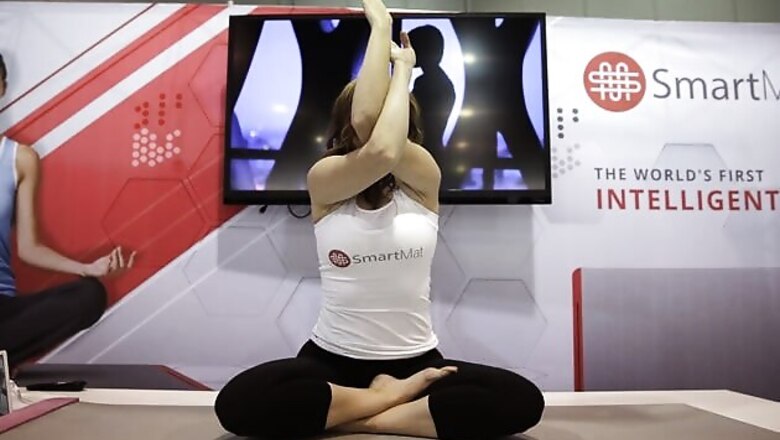
views
Las Vegas: Technology forecasters are calling 2015 the year of the Internet of Things - that idea that everyday objects will use sensors and Internet connectivity to start thinking and acting for themselves. At the International CES gadget show this week, I explored many of the elements that could lead to a smarter home. Some were intriguing; others disappointing. Are the capabilities on offer worth the expense and hassle? I'm not entirely convinced.
But there were some gems amid the noise.
The smart coffeemaker
A Mr Coffee coffeepot has remote functionality but it's limited to starting a brew or setting a timer. (And you have to replenish the coffee beans and water after each brew.) But a company named Smarter is making a coffeemaker that lets you put in a week's worth of water and coffee beans. And the best part: The Smarter device will know when you had a horrible night of sleep, based on data from fitness trackers. It promises to make your coffee extra strong that morning.
The $199 device will start shipping in March.
The smart yoga mat
Sensors in the SmartMat analyse your stance. The app alerts you if your balance is off and will tell you to put more weight on your right foot, for instance. You are scored on how well you did the routine.
The app takes up the full screen, so you'll need a separate device if you have a workout video to watch. SmartMat costs $297 and will ship in July.
The smart lock
For $219, Kwikset's Kevo system will unlock the door while your phone's still in your pocket, useful if your hands are full. You train it so that it opens only when you're right outside the door, not down the block, or worse, inside the house late at night.
Although I'm nervous that someone will find a way to circumvent the safeguards, it's useful in that you can give guests, nannies and contractors temporary digital keys. You can set parameters - such as working only during certain hours. An upcoming Plus offering will let you check remotely whether you remembered to lock the door - and lock it if you forgot. It would be more useful if it could do that automatically, using motion sensors to detect that no one's home.
The smart flowerpot
Parrot, a company better known for making recreational drones, uses sensors to detect soil moisture, fertilizer levels, temperature and light. You input what type of flower is in the pot and it adjusts for that plant's ideal conditions. One model is an actual flowerpot with a container to hold two liters of water. When the soil is dry, the pot opens a valve. Parrot also has a contraption you stick into an existing flowerpot. You attach a plastic water bottle to it.
Neither is smart enough yet to automatically turn on the lights or the air conditioner if necessary. Parrot is leaving it to others to write those apps. For now, you get a phone notification when your plant needs attention.
Both models are coming this year. Prices haven't been determined.
The smart kitchen
The Drop app works with a $100 wireless scale. Low on sugar? The recipe will adjust so you can still make the meal - for fewer servings. The app also tells you when it's time to preheat the oven, but it's not smart enough to do it for you. Maybe that's a good thing - having an oven you can turn on remotely makes me nervous, too.
The smart phone (not to be confused with the smartphone in your pocket).
Ooma, an Internet-based phone service, now works with Google's Nest smart thermostat and smoke alarm. If the smoke alarm goes off, Ooma will dial your cellphone to ask whether you want to call 911. It would be more useful, of course, if it simply called 911 for you. Your house could have burned down by the time you see the missed call.
Another feature will call you if there's no motion detected by a certain time - such as when your kids should have come home.
The Ooma device costs $130 plus a $10-a-month Premier service.
Of course, many products sound good, but don't perform as desired in real life. I got demos, but didn't get to use these products in real home settings yet.
I can give you an example from a Lenovo tablet I checked out, however. Its AnyPen technology promises to let you use a regular pen or pencil to write or tap on its tablet. But it didn't work with four pens I tried. I was told the pens' tips might not be wide enough. AnyPen worked for me with a pencil and (gently!) using a fork's prong.
But then shouldn't the feature be called AnyFork? Really.




















Comments
0 comment